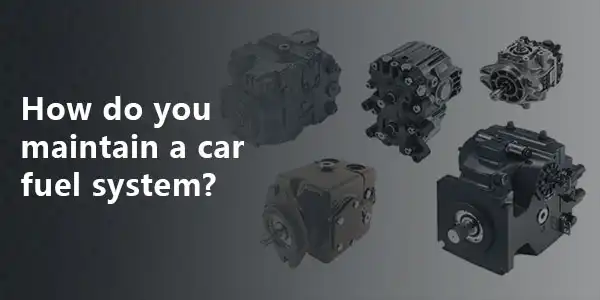How Do You Maintain A Car Fuel System?
Diesel fuel system
The task of the fuel supply system is to prepare a certain amount and concentration of combustible gas mixture according to the requirements of different working conditions of the engine, and supply it to the cylinder, so that it will ignite and burn when the compression is nearing the end, and expand to do work. Finally, the supply system should also discharge the products of combustion - exhaust gases - into the atmosphere. The fuel delivery pump sucks the diesel oil out from the fuel tank, and enters the low-pressure oil chamber of the fuel injection pump after the impurities are filtered out by the filter. The oiler sprays the fuel into the combustion chamber in the form of mist, forms a mixed gas and burns it for work, and then exhausts the exhaust gas into the atmosphere through the exhaust device. More introductions are as follows: 1. The task of the gasoline engine fuel supply system is to prepare a certain amount and concentration of combustible mixture according to the requirements of various engine working conditions, and supply it to the cylinder so that it will ignite and burn when the compression is nearing the end. acting. Finally, the feed system should also vent the combustion exhaust into the atmosphere. 2. Composition of fuel supply system: fuel tank, fuel pipe, fuel pump, fuel filter, air filter, fuel pressure regulator, fuel injector, cold start injector, oil pressure pulse attenuator, intake pipe, exhaust tube, etc.
Cleaning the fuel system
The question of why the car fuel system should be cleaned is also collected on the Internet. The information about whether the car fuel system needs to be cleaned and why the car fuel system needs to be cleaned, let’s share it with everyone to understand.
-
The fuel itself contains colloids, impurities, dust, moisture, etc. Deposits such as sludge build up in the fuel tank and intake lines.
-
Carbon deposits and deposits will block the needle valve and valve hole of the diesel fuel injection system, affecting the performance of precision parts of the fuel system, resulting in fuel injection, atomization, and power performance. Carbon deposits and deposits will cause the cylinder pressure of the intake valve to close or even backfire, resulting in engine idling, increased fuel consumption, and worsened exhaust emissions. Carbon deposits on the piston top and cylinder head can easily cause local overheating of the combustion chamber, gasoline preheating and engine knocking. These failures shorten the life of the engine.
-
Regularly clean the throttle valve or intake system of the fuel system with a high-quality cleaner (internal cleaning). It removes gum and deposits from throttle valves and intake manifolds and removes carbon deposits from intake valves, combustion chambers, and catalytic converters. Restore the normal compression ratio, eliminate idling, knocking, misfiring, and other faults, and make the oil-air mixing ratio more accurate.
Maintain the fuel system
Automobile fuel system maintenance includes oil pump, oil pipe, filter element, fuel rail, fuel injector, oil pressure regulator, etc. Regularly add fuel additives to clean it. For new cars, it is recommended to add a protective agent when cleaning the fuel system after about 50,000 kilometers. Fuel system maintenance includes 1. The fuel system is divided into a fuel tank, an oil circuit, and fuel injectors. There are gasoline pumps, gasoline filters, and other parts in the system. Fuel enters the combustion chamber through the fuel pump, fuel filter, and fuel injectors for combustion. , to generate the driving force; 2. The pipeline of the fuel system is full of colloids produced by fuel oxidation. Due to the physical phenomena of the atmosphere, rain, car washing, etc. will inevitably cause water to enter the fuel tank and the oil circuit. Too much colloid will cause premature damage to the gasoline filter and blockage of the fuel injector, and the existence of moisture will cause premature wear of the gasoline pump and rust the metal components in the oil circuit; 3. Different varieties and different qualities of gasoline will cause An increase in colloid and moisture is also different. For example, my country's current gasoline is divided into three categories, unleaded gasoline, ethanol gasoline, and methanol gasoline, and unleaded gasoline is also divided into three categories, National IV, National III, and National II. The amount of gum produced by unleaded gasoline will be greater than that of ethanol and methanol gasoline, while ethanol and methanol gasoline is more likely to absorb water.
 Track Your Order
Track Your Order




